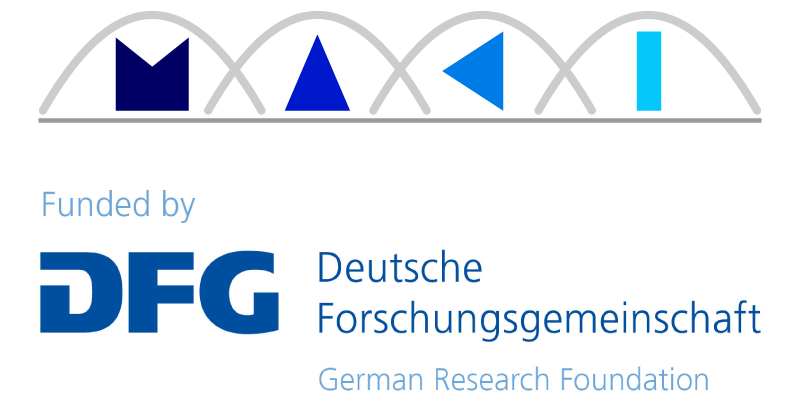To provide all kinds of applications in multihop wireless networks at the edge of the Internet, it is necessary to optimally support all four key communication patterns: point-to-point (1:1), point-to-multipoint (1:N), multipoint-to-point (M:1), and multipoint-to-multipoint (M:N). To this end, transitions between mechanisms on physical layer (PHY), data link layer (MAC), and network layer (NET) will be investigated by means of a cross-layer approach that further incorporates the application (APP) requirements.
Phase I of MAKI focussed on the investigation of the patterns 1:1 and 1:N. A cross-layer optimization framework (TSOR) has been designed. It enables to find the optimal combination of mechanisms on PHY, MAC, and NET, while taking into consideration the application properties and requirements. To achieve this goal, TSOR exploits network support structures (corridor, butterfly, tree), which support the optimal selection of network nodes by enabling favourable network settings for further optimization.
The network is transferred—by means of transitions—to the desired working point. A transition refers to the switch between equivalent mechanisms, for instance, between multiple PHY-Unicasts and one PHY-Multicast or between tree and butterfly. The validation of the proposed solutions was performed by means of theoretical analysis, simulation, and experimental evaluation in a SDWN testbed based on SDRs. As a result, significant system gains over the current state-of-the-art could be achieved.
In the second phase the interaction of transition-enhanced mechanisms on PHY, MAC, and NET layer are investigated under less constraints. To this end, the following aspects are taken into consideration. The communication patterns M:1 and M:N will be investigated. This allows to support novel applications such as video composition, telepresence, caching, and cooperative sensor data acquisition, which will feed their requirements into the optimization. Efficient multihop control mechanisms are investigated to rapidly communicate transition decisions as well as general control information between nodes. This further enables the efficient operation of software-defined PHY, MAC, and NET mechanisms.
Furthermore the optimization of transitions is incorporating external environmental conditions in addition to networking context.
Based on the forecast of changes in environmental conditions, proactive transitions are enabled. A focus is placed on the investigation of software-defined MAC mechanisms, which enable the efficient operation of coexisting multi mechanisms in wireless multihop networks.
A further emphasis is placed on the optimal configuration of adaptive MAC mechanisms and the automated generation of MAC mechanisms that are optimized for particular scenarios.
Additionally the simultaneous support of all four elementary communication patterns is investigated with respect to the network resources required.
Similar to Phase I, the performance of the devised solutions regarding latency, energy efficiency or throughput are validated by means of analysis, simulation, and testbed experimentation.
In summary, project C1 covers the lower protocol layers in CRC MAKI for wireless networks. The solutions of C1 enable proactive transitions of coexistent multi mechanisms on lower protocol layers. Metrics to quantify the performance of different combinations of mechanisms are devised and made available to higher layers to allow a joint optimization with the other MAKI projects towards the optimal operation of a transition-enabled system.



